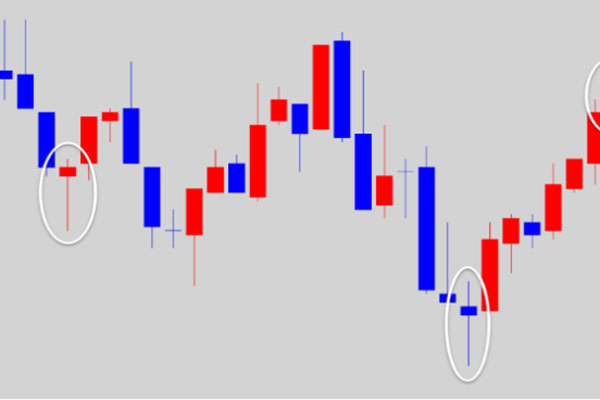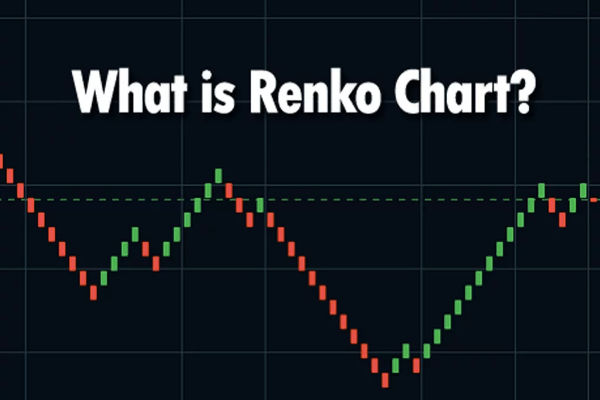การเทรด
เกี่ยวกับ EBC
เผยแพร่เมื่อ: 2023-07-13
อัปเดตเมื่อ: 2025-02-11
อัตราแลกเปลี่ยนแบบลอยตัว (floating exchange rate) คือระบบการกำหนดอัตราแลกเปลี่ยนที่อิงตามอุปสงค์และอุปทานในตลาด โดยอัตราแลกเปลี่ยนจะปรับตัวตามแรงกดดันจากตลาด Forex โดยให้มีการเคลื่อนไหวของอัตราแลกเปลี่ยนในช่วงที่กำหนดได้อย่างอิสระ ซึ่งแตกต่างจากระบบอัตราแลกเปลี่ยนคงที่ในระบบอัตราแลกเปลี่ยนแบบลอยตัว อัตราแลกเปลี่ยนจะสามารถปรับตัวตามการเปลี่ยนแปลงของอุปสงค์และอุปทานในตลาดและสะท้อนถึงปัจจัยทางเศรษฐกิจและนโยบายต่าง ๆ การเข้าใจในระบบอัตราแลกเปลี่ยนแบบลอยตัวและการวิเคราะห์ข้อดีข้อเสียจะช่วยให้นักลงทุนสามารถใช้ประโยชน์ในการเทรดได้มากขึ้น

อัตราแลกเปลี่ยนแบบลอยตัวคือระบบที่ไม่กำหนดขอบเขตการเคลื่อนไหวของอัตราแลกเปลี่ยน แต่ปล่อยให้ปรับตัวตามอุปสงค์และอุปทานในตลาด Forex หลังจากสงครามโลกครั้งที่ 1 สกุลเงินหลักของหลายประเทศได้หลุดออกจากระบบมาตรฐานทองคำ และเริ่มใช้ระบบอัตราแลกเปลี่ยนแบบลอยตัวในระยะสั้น โดยในปี 1973 หลังจากระบบบริตตันวูดส์ล่มสลาย ประเทศต่าง ๆ ทั่วโลกจึงเริ่มนำระบบอัตราแลกเปลี่ยนแบบลอยตัวมาใช้กันอย่างแพร่หลาย
อัตราแลกเปลี่ยนแบบลอยตัวสามารถแบ่งได้เป็น 2 ประเภทคือ :
1. ระบบลอยตัวเสรี หมายถึง ระบบที่รัฐบาลของประเทศไม่ดำเนินการแทรกแซงตลาด Forex โดยปล่อยให้การเคลื่อนไหวของอัตราแลกเปลี่ยนเป็นไปตามกลไกของตลาดอย่างเต็มที่
2. ระบบลอยตัวที่มีการจัดการ ระบบที่รัฐบาลของประเทศเข้าไปแทรกแซงตลาด Forex ในบางกรณี เพื่อควบคุมให้อัตราแลกเปลี่ยนไม่ผันผวนมากเกินไป ในปัจจุบันประเทศส่วนใหญ่ที่ใช้ระบบอัตราแลกเปลี่ยนแบบลอยตัวจะใช้รูปแบบลอยตัวที่มีการจัดการ
จากมุมมองของวิธีการลอยตัวระบบอัตราแลกเปลี่ยนแบบลอยตัวสามารถแบ่งได้เป็น 3 ประเภทคือ:
1. ระบบลอยตัวเดี่ยว คือ ระบบที่สกุลเงินของประเทศไม่ผูกกับอัตราแลกเปลี่ยนของสกุลเงินใด ๆ โดยการเคลื่อนไหวของอัตราแลกเปลี่ยนจะเป็นไปตามอุปสงค์และอุปทานในตลาด Forex เช่น ดอลลาร์สหรัฐฯ และเยนญี่ปุ่น
2. ระบบลอยตัวร่วม คือ ระบบที่สกุลเงินของประเทศในกลุ่มจะผูกอัตราแลกเปลี่ยนแบบคงที่และกำหนดขอบเขตการเคลื่อนไหวของอัตราแลกเปลี่ยน โดยมีหน้าที่รักษาอัตราแลกเปลี่ยนคงที่ภายในกลุ่ม แต่สำหรับการแลกเปลี่ยนกับสกุลเงินภายนอกกลุ่มนั้นจะเป็นการเคลื่อนไหวอิสระ เช่น กลุ่มประเทศในสหภาพเศรษฐกิจยุโรป
3. ระบบนโยบายตรึงอัตราแลกเปลี่ยน คือ ระบบที่ตรึงอัตราแลกเปลี่ยนของสกุลเงินหนึ่งหรือสิทธิพิเศษถอนเงิน (Special Drawing Rights : SDR) หรือหน่วยเงินยุโรป (European Currency Unit : ECU) กับสกุลเงินหลักและให้สกุลเงินอื่น ๆ เคลื่อนไหวตามการเปลี่ยนแปลงของสกุลเงินหลัก ระบบนี้หลายประเทศในโลกที่กำลังพัฒนาใช้ โดยมีการปรับอัตราแลกเปลี่ยนตามดัชนี
ข้อดีและข้อเสียของอัตราแลกเปลี่ยนแบบลอยตัว
ข้อดี
1. การตอบสนองของตลาดที่รวดเร็ว: ในระบบอัตราแลกเปลี่ยนแบบลอยตัว อัตราแลกเปลี่ยนสามารถปรับตัวได้อย่างรวดเร็วตามการเปลี่ยนแปลงของอุปสงค์และอุปทานในตลาด ซึ่งช่วยให้สะท้อนสถานการณ์ในตลาดโลกได้อย่างแม่นยำ และช่วยหลีกเลี่ยงการแทรกแซงจากภาครัฐในการรักษาเสถียรภาพของอัตราแลกเปลี่ยน
2. กลไกการปรับตัวอัตโนมัติ: ระบบอัตราแลกเปลี่ยนแบบลอยตัวมีกลไกการปรับตัวที่ช่วยให้การเปลี่ยนแปลงของอัตราแลกเปลี่ยนสามารถช่วยประเทศในการปรับตัวเมื่อเศรษฐกิจภายในประเทศเผชิญกับปัญหา เช่น การรับมือกับเงินเฟ้อหรือการเพิ่มขีดความสามารถในการแข่งขันของการส่งออก
3. ความเป็นอิสระในนโยบาย: ระบบอัตราแลกเปลี่ยนแบบลอยตัวให้รัฐบาลมีอิสระในการกำหนดนโยบายทางการเงินมากขึ้น เพราะรัฐบาลสามารถตัดสินใจเกี่ยวกับนโยบายการเงินได้เอง โดยไม่ต้องเสียสละเป้าหมายทางนโยบายอื่น ๆ เพื่อรักษาอัตราแลกเปลี่ยน
4. การลดการใช้เงินทุนสำรองระหว่างประเทศ: ในระบบอัตราแลกเปลี่ยนแบบคงที่ รัฐบาลมักจะต้องรักษาระดับเงินทุนสำรองระหว่างประเทศเพื่อสนับสนุนอัตราแลกเปลี่ยนที่คงที่ แต่ระบบอัตราแลกเปลี่ยนแบบลอยตัวสามารถลดความจำเป็นในการใช้เงินทุนสำรองระหว่างประเทศ และช่วยลดการใช้จ่าย
ข้อเสีย
1. ความไม่เสถียร: ในระบบอัตราแลกเปลี่ยนแบบลอยตัว อัตราแลกเปลี่ยนอาจมีความผันผวนอย่างมากในระยะสั้น ซึ่งอาจทำให้เกิดความไม่แน่นอนในตลาด และทำให้ธุรกิจและนักลงทุนมีความยากลำบากสำหรับการวางแผนในอนาคต
2. ความเสี่ยงจากอัตราแลกเปลี่ยน: ระบบอัตราแลกเปลี่ยนแบบลอยตัวเพิ่มความเสี่ยงจากอัตราแลกเปลี่ยน โดยเฉพาะสำหรับธุรกิจที่ทำการค้าระหว่างประเทศหรือการลงทุนข้ามชาติ การผันผวนของอัตราแลกเปลี่ยนอาจส่งผลเสีย เช่น ลดความสามารถในการแข่งขันของการส่งออกหรือเพิ่มต้นทุนการนำเข้า
3. การเก็งกำไร: ระบบอัตราแลกเปลี่ยนแบบลอยตัวอาจกระตุ้นให้เกิดการซื้อขายเก็งกำไร ซึ่งอาจทำให้ตลาดเกิดความผันผวนเกินไป และอาจทำลายความเสถียรของเศรษฐกิจของประเทศ
4. ต้นทุนคงที่: สำหรับบางประเทศ การรักษาระบบอัตราแลกเปลี่ยนแบบลอยตัวอาจต้องใช้ทรัพยากรและต้นทุนในการกำกับดูแลมากขึ้น เนื่องจากรัฐบาลต้องติดตามตลาดอย่างใกล้ชิดและดำเนินมาตรการแทรกแซงเมื่อจำเป็น
5. ขาดความเสถียรในระยะยาว: ในระบบอัตราแลกเปลี่ยนแบบลอยตัว อัตราแลกเปลี่ยนอาจขาดความเสถียรในระยะยาว ซึ่งอาจส่งผลกระทบต่อการวางแผนธุรกิจในระยะยาวและการตัดสินใจลงทุนระหว่างประเทศ
ผลกระทบของระบบอัตราแลกเปลี่ยนแบบลอยตัวต่อเศรษฐกิจโลก
1. การค้าระหว่างประเทศ: ระบบอัตราแลกเปลี่ยนแบบลอยตัวสามารถส่งเสริมการค้าระหว่างประเทศได้ เนื่องจากสามารถสะท้อนอุปสงค์และอุปทานของตลาด ทำให้ค่าเงินมีความยุติธรรมและสอดคล้องกับสภาพตลาดจริง ช่วยให้การทำธุรกิจระหว่างประเทศสะดวกมากขึ้น
2. ความสามารถในการแข่งขัน: ระบบอัตราแลกเปลี่ยนแบบลอยตัวสามารถช่วยให้ประเทศปรับค่าเงินของตนเพื่อรักษาหรือเพิ่มความสามารถในการแข่งขันของอุตสาหกรรมในประเทศ เมื่อสกุลเงินของประเทศแข็งค่าขึ้น การส่งออกอาจเผชิญกับแรงกดดัน แต่การนำเข้าก็อาจราคาถูกลง สิ่งนี้สามารถผลักดันให้ธุรกิจในประเทศต้องเพิ่มประสิทธิภาพเพื่อปรับตัวให้ทันกับตลาดโลก
3. การลงทุนจากต่างประเทศ: ระบบอัตราแลกเปลี่ยนแบบลอยตัวเพิ่มความเสี่ยงให้กับนักลงทุนต่างประเทศ เนื่องจากการผันผวนของอัตราแลกเปลี่ยนอาจมีผลกระทบต่อการลงทุนของพวกเขา ซึ่งอาจทำให้บางประเทศมีความน่าสนใจลดลง แต่ก็อาจสร้างโอกาสในการลงทุนเช่นกัน เพราะการผันผวนของอัตราแลกเปลี่ยนอาจนำมาซึ่งผลตอบแทนที่สูง
4. ความเสถียรของตลาด Forex: ตลาด Forex ในระบบอัตราแลกเปลี่ยนแบบลอยตัวอาจมีความยืดหยุ่นมากขึ้น เนื่องจากผู้เข้าร่วมตลาดสามารถซื้อขายเงินตราต่างประเทศได้อย่างอิสระ แต่ก็อาจทำให้ตลาดได้รับผลกระทบจากการเก็งกำไรระยะสั้น ส่งผลให้การเคลื่อนไหวของอัตราแลกเปลี่ยนเพิ่มขึ้น
5. เงินเฟ้อและเสถียรภาพของราคา: ระบบอัตราแลกเปลี่ยนแบบลอยตัวสามารถช่วยให้ประเทศรับมือกับความท้าทายเรื่องเงินเฟ้อและเสถียรภาพของราคาได้ดียิ่งขึ้น เมื่อเงินเฟ้อในประเทศเพิ่มขึ้น ค่าเงินอาจได้รับผลกระทบและทำให้สกุลเงินแข็งค่าขึ้น ซึ่งช่วยควบคุมอัตราเงินเฟ้อได้
จากการอธิบายเกี่ยวกับระบบอัตราแลกเปลี่ยนแบบลอยตัวและข้อดีข้อเสีย เราจะเห็นว่าในระบบนี้อัตราแลกเปลี่ยนจะผันผวนตามความต้องการและอุปทานในตลาด ซึ่งหมายความว่าอัตราแลกเปลี่ยนจะขึ้นอยู่กับการซื้อขายและความต้องการของนักลงทุนที่ต้องการถือครองเงินตราหรือป้องกันความเสี่ยง หากเศรษฐกิจของประเทศเติบโตดีและมีการไหลเข้าของเงินทุนมากขึ้น สกุลเงินของประเทศนั้นจะมีมูลค่าเพิ่มขึ้น ในทางกลับกัน หากเศรษฐกิจของประเทศเจอปัญหาหรือมีการไหลออกของเงินทุนมากขึ้น สกุลเงินของประเทศนั้นก็จะอ่อนค่าลง



